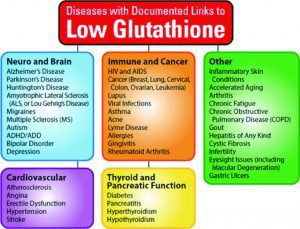By Doreen DeStefano
 The Alzheimer’s Foundation of American describes the disease as follows:
The Alzheimer’s Foundation of American describes the disease as follows:
• Alzheimer’s disease is a progressive, degenerative disorder that attacks the brain’s nerve cells, or neurons, resulting in loss of memory, thinking and language skills, and behavioral changes.
• These neurons, which produce the brain chemical, or neurotransmitter, acetylcholine, break connections with other nerve cells and ultimately die. For example, short-term memory fails when Alzheimer’s disease first destroys nerve cells in the hippocampus, and language skills and judgment decline when neurons die in the cerebral cortex.
• Two types of abnormal lesions clog the brains of individuals with Alzheimer’s disease: Beta-amyloid plaques—sticky clumps of protein fragments and cellular material that form outside and around neurons; and neurofibrillary tangles—insoluble twisted fibers composed largely of the protein tau that build up inside nerve cells. Although these structures are hallmarks of the disease, scientists are unclear whether they cause it or a byproduct of it.
• Alzheimer’s disease is the most common cause of dementia, or loss of intellectual function, among people aged 65 and older.
• Alzheimer’s disease is not a normal part of aging. (www.alzfdn.org)
Alzheimer’s is the most common form of dementia and it is not a normal part of aging.
There are currently 5.4 million Americans with Alzheimer’s. Most of those are age 65 or older. One in nine people age 65 and older have Alzheimer’s disease. However, this disease has a profound impact not just on the person with it, but on the friends and family around the patient.
The initial stages of Alzheimer’s are characterized by memory loss like forgetting words, something they just read, names, and people. They have difficulty making plans and organizing things.
In later stages the person with Alzheimer’s forgets more things, more frequently, and ability to live alone declines.
As the disease progress, delusions can develop, and the ability to accomplish simple things like walking or eating can decline.
There is no cure for this disease. The good news is that there are many ways to prevent Alzheimer’s disease.
PREVENTATIVE MEASURES
1. A healthy diet full of fruits, vegetables and healthy fats is a primary preventive strategy. Arterial plaque is associated with cognitive issues when vascular disease is also present. This diet is the same as a heart healthy diet. Ensure good nutritional intake, including supplements that cover a wide range of high quality methyl B vitamins that your body can easily absorb. Also ensure that your glutathione levels are maintained. This is extremely beneficial in maintaining your cognitive health.
2. Exercise for your body and your brain. Keep your body and arteries functioning optimally by physically exercising daily. Keep your brain in shape by challenging it! Use your brain to problem solve, including puzzles, reading and anything else that requires brain power.
3. Maintain healthy methylation. Methylation is the way our cells break things down, build new nutrients, and detoxify our systems. When methylation isn’t working properly, homocysteine levels rise. High homocysteine levels have been linked to dementia, Alzheimer’s, poor memory and concentration, among other health issues. There are natural ways to improve your methylation if it isn’t functioning properly. Low methylation often means low glutathione levels. Low glutathione levels are also associated with dementia and Alzheimer’s disease. Have your methylation capacity and your glutathione levels tested to ensure optimal brain function.
4. Oxygen. Oxygen, in the form of mild hyperbaric oxygen therapy. Hyperbaric Oxygen Therapy (HBOT) can slow down the progression of Alzheimer’s disease. In a study by Neurologist Constantino Ladecola researchers found that Alzheimer’s is linked to poor blood flow in the brain. Patients in HBOT receive 2000% more Oxygen during their treatment compared to the 21 % at sea level. When the body is under pressure in an Oxygenated environment the tissues and fluids are saturated with Oxygen, this enables Oxygen to get to places in the brain it otherwise would not.
(http://www.oxygenrescuecarecentersofamerica.com/).
5. Supplements: Glutathione is the most important aspect of prevention and treatment of Alzheimer’s disease. Alzheimer’s is closely associated with oxidative stress. Oxidative stress has been attributed to decreased levels of the brain antioxidant, glutathione. Studies have shown that Alzheimer’s sufferers have low levels of glutathione in their brains. Glutathione must be given intravenously. Digestion breaks it down into oxidative particles that are not useful, and can be harmful, to the body. Glutathione has such potent effects on mental performance and cognition that otherwise healthy individuals notice considerable improvement too!
The groundbreaking work of Dr. David Perlmutter shows that glutathione, administered intravenously, is a “miracle” for Alzheimer’s. He has used glutathione extensively in cases with Alzheimer’s and other dementias, multiple sclerosis, and strokes.
Vitamin E. A recent study determined that the 2000 iu of natural vitamin E in the d-alpha tocopherol form improved cognition and slowed the decline in Alzheimer’s patients. The study showed that it worked better that memantine, the most widely prescribed Alzheimer’s medication on the market.
Ginko Biloba: This compound increases blood flow in the brain. In a very important study published in 1997 by the Journal of the American Medical Association, Gingko biloba was shown not only to prevent Alzheimer’s degeneration but actually improved many of the cases, compared to the placebo.
Omega-3 DHA. 1,000 mg of DHA has been shown to improve brain function.
Cognitive decline is not a natural part of aging. Learn how to age in optimal health and to prevent cognitive decline with safe, natural and effective modalities. Call Root Causes today at 239-425-2900 to make an appointment for an assessment and healthy aging program specifically for you.
IV glutathione is becoming an increasingly important part of the intravenous nutrient therapy toolkit. The scientific basis of intravenous glutathione therapy is well established, and clinical studies have demonstrated excellent results across a variety of conditions, including serious chronic diseases.
What is glutathione?
Glutathione is a protein called a tripeptide – a molecule composed of three amino acids. It is a potent antioxidant and quenches dangerous free radicals. It also binds to dangerous toxins through a process called “conjugation” so that they can be safely eliminated.
Why is intravenous glutathione better than oral glutathione?
Oral glutathione is not very stable; stomach acid and enzymes break it down (into its three component amino acid parts), rendering it useless. Therefore we have to use IV glutathione to ensure effective delivery of the nutrient directly through the bloodstream into the cells.
INTRAVENOUS
GLUTATHIONE
IV Glutathione Shows Promise in Treating Many conditions
Intravenous glutathione to be helpful in:
• Neurodegenerative diseases
• Parkinson’s disease
• Multiple sclerosis
• Alzheimer’s disease
• Stroke
• Depression
• Athletic performance enhancement
• Asthma
• Liver diseases (hepatitis, fatty liver, cirrhosis)
IV Glutathione For Anti-aging
Glutathione is the body’s most powerful natural antioxidant and is found in every cell in the body. Glutathione bolsters the immune system and also helps neutralize damaging free radicals. It can even help your body repair free radical damage caused by such things as stress, radiation, infections, drugs, medications, malnutrition, and aging.









